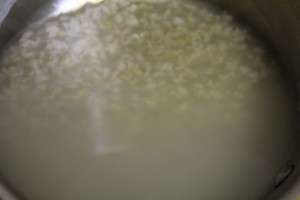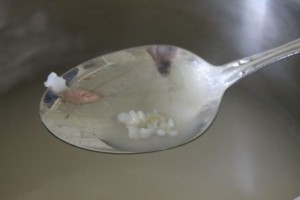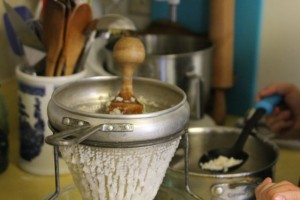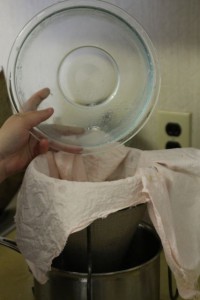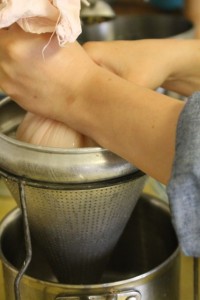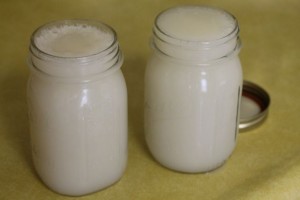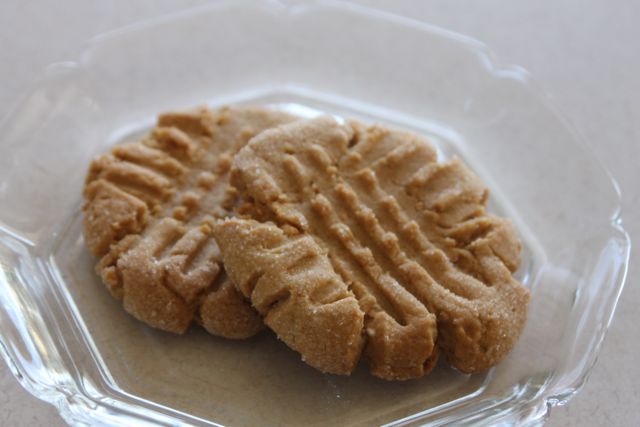
Non-Dairy Peanut Butter Cookies
After a week on the road, I was happy to get home Monday afternoon. Not only to sleep in my own bed and see the Man of Steel, but also to enjoy the container of dairy-free peanut butter cookies I’d tucked away in the freezer before leaving. Knowing the cookies were waiting made it much easier to turn down the dairy-laced treats offered throughout the days away from home. (So did sipping on a Strawberry Fruit Smoothie at the Cheesecake Factory while friends enjoyed the restaurant’s signature desserts.)
The secret to these perfectly delicious and dairy-free peanut butter cookies–no way would you know they contain no butter unless someone spilled the beans–is to use coconut oil instead of butter or margarine. The coconut oil lends the same texture and crisp lightness butter does. So give this version of recipe, originally found at Country at Heart Recipes, a try and leave a comment about how it worked for you.
Non-Dairy Peanut Butter Cookies
1 cup coconut oil, room temperature
1 cup chunky peanut butter
1 cup brown sugar
2 eggs
1 teaspoon vanilla
3 cups flour
2 teaspoons baking soda
1 teaspoon baking powder
1/2 teaspoon salt
1/2 teaspoon cream of tartar
Preheat oven to 350°. If using baking stones, put them in oven to heat. In mixing bowl cream shortening, peanut butter, brown sugar, and eggs with an electric mixer until ingredients are fluffy. Add vanilla, baking soda, baking powder, salt, and cream of tartar. Mix well. Add dry ingredients and mix well, scraping down sides as necessary.
Roll dough into walnut-sized balls. Roll in granulated white sugar. Place on ungreased cookie sheet or heated baking stones. Make crisscross indentation with a fork. Bake for 10 minutes until golden around the edges. Makes about 4–5 dozen. (I put 1 stone of unbaked cookies on bottom rack of oven for 5 minutes. Then I turn the stone around and place it on the top rack and put a new stone of unbaked cookies on the bottom rack. Bake for 5 more minutes, take the first stone out, move the second stone up, and place a new unbaked stone on the bottom rack, repeating the steps until all the cookies are baked.)

